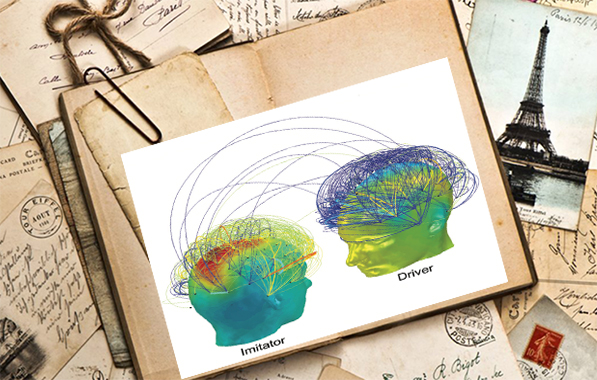Monday, 29 January 2024
An interview that capture some of the essential aspects of my book to be published this fall
 Today I’d like to tell you about an interview with a researcher whose thoughts run in exactly the same direction as those in the book that I’ve been writing since 2020. This book will be published this fall by
Today I’d like to tell you about an interview with a researcher whose thoughts run in exactly the same direction as those in the book that I’ve been writing since 2020. This book will be published this fall by
Écosociété. (I don’t know whether I’ve mentioned this book in the English version of this blog before, but it’s being published in French, and if you’re interested and can read French, I’ve been maintaining an “author’s log” about the process of writing it, in the French version of this blog).
The interview that I just mentioned is also in French. It was conducted in October 2023 with Guillaume Dumas, who is a professor of computational psychiatry at the Université de Montréal and director of the precision psychiatry and social physiology laboratory of the research centre at CHU Sainte-Justine, a pediatric hospital affiliated with that university. Professor Dumas specializes in a method called “hyperscanning”.
In the interview, he sketches the history of hyperscanning and explains what it involves: conducting real-time observations of what is happening in the brains of two people who are interacting socially. More specifically, hyperscanning often uses methods such as functional magnetic resonance imaging (or electroencephalography, which provides better temporal resolution) to observe correlations between the activities of certain regions in different brains. In other words, hyperscanning observes synchronization of neural activity: bursts of activity at the same frequency and in the same phase, but not between different regions in the same brain (as occurs for even the smallest cognitive task), but rather between two different brains.
But what I was so happy about was not so much to learn that this method that I had discussed in the French version of my blog five years ago was now being investigated in depth at research centres in my home city of Montreal, but rather to read the following two passages (translated here from the French):
It’s the social interaction that leads to the synchronization. Back in the 1990s, Francisco Varela, director of research at the Laboratory for Cognitive Neurosciences and Brain Imaging at the Pitié-Salpêtrière University Hospital in Paris, had already demonstrated that becoming aware of the perception of a stimulus caused the activity of various parts of the brain to become synchronized. Varela had thus shifted the focus from separate modules within the brain to interactions among the various parts of the brain. With hyperscanning and multibrain electroencephalography, researchers are now extending this approach to the activity of multiple brains. This research on synchronization between brains reflects a more modern view of the brain. Instead of focusing on this organ alone, researchers are looking at embodied cognition and embracing the idea that we are just as much the product of our biological grounding in our bodies as of our interactions with our environment, and in particular our social environment.
Francisco Varela’s work on embodied cognition had already shown that we have to look beyond what’s inside our skulls and examine not only the rest of our bodies, but also our environment, including our social environment.
These two paragraphs might have been a blurb on the back of my new book, so precisely do they capture some of its essential aspects by referring to the seminal work of Francisco Varela, which represents a constant thread throughout it. So just as I had written in an earlier blog post about finding another book that is similar to my own in form , here is evidence that I may be on the right track in terms of content as well. That should recharge my batteries for the final sprint that I am about to begin!
From Thought to Language | Comments Closed







